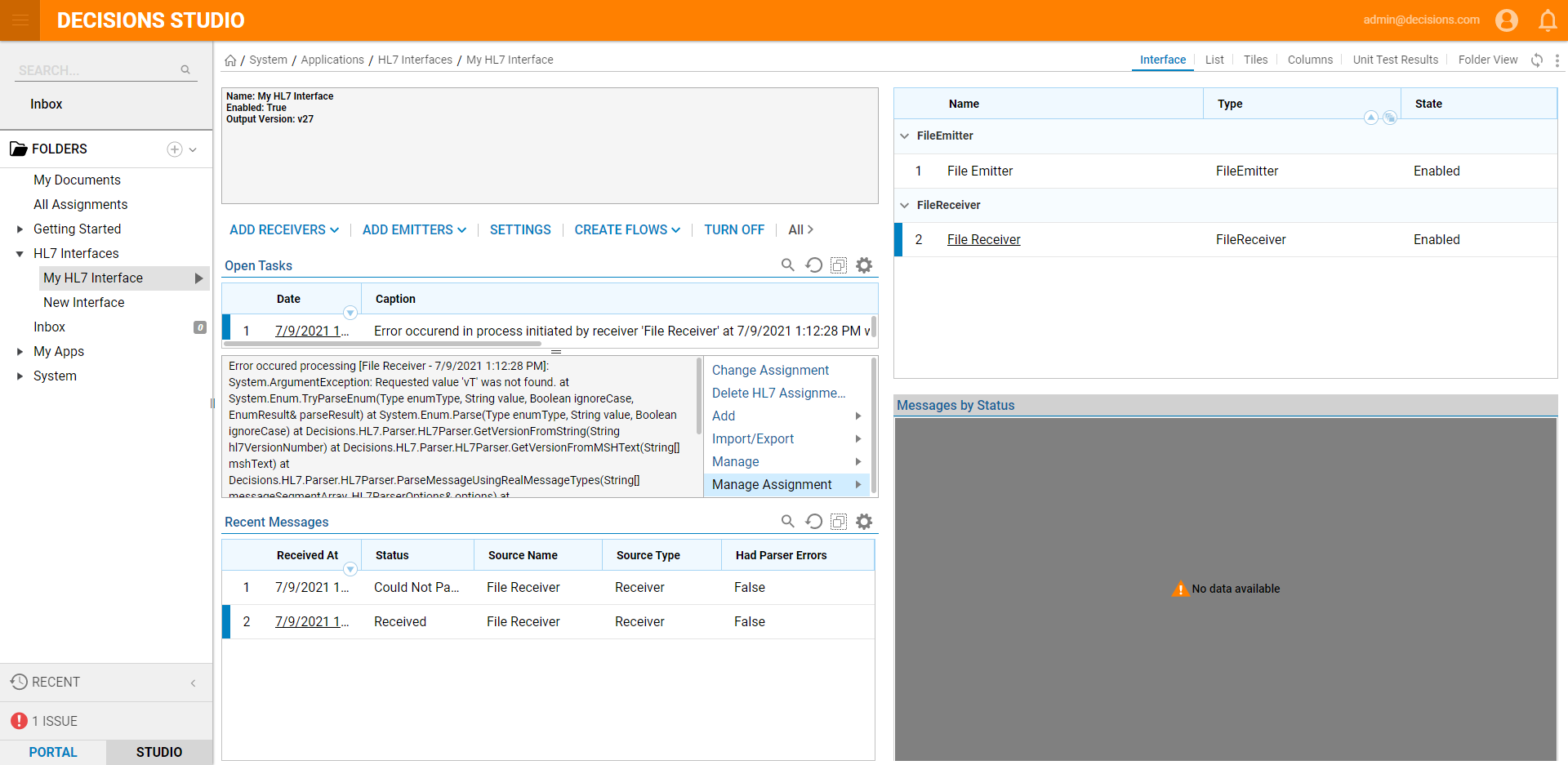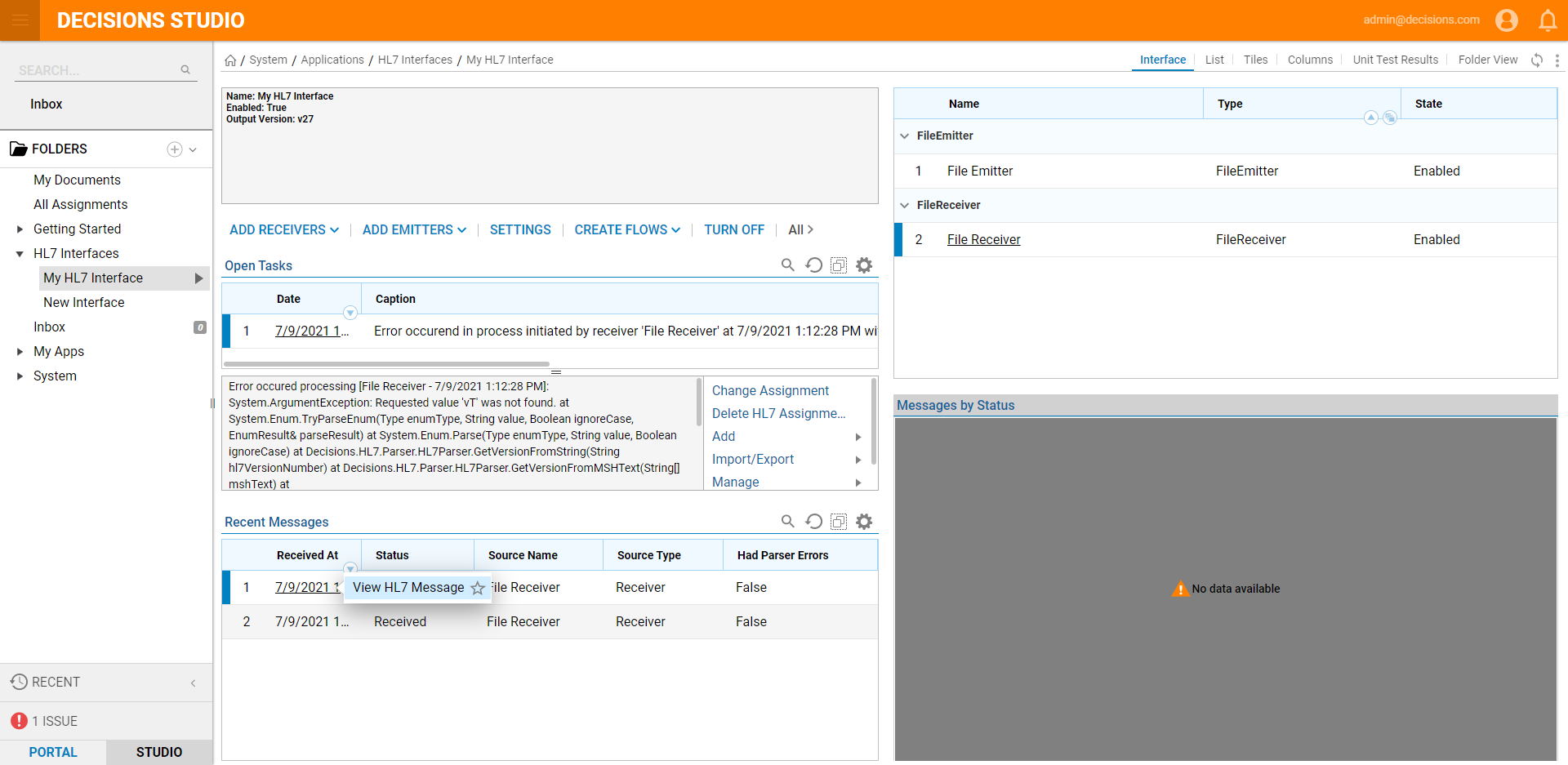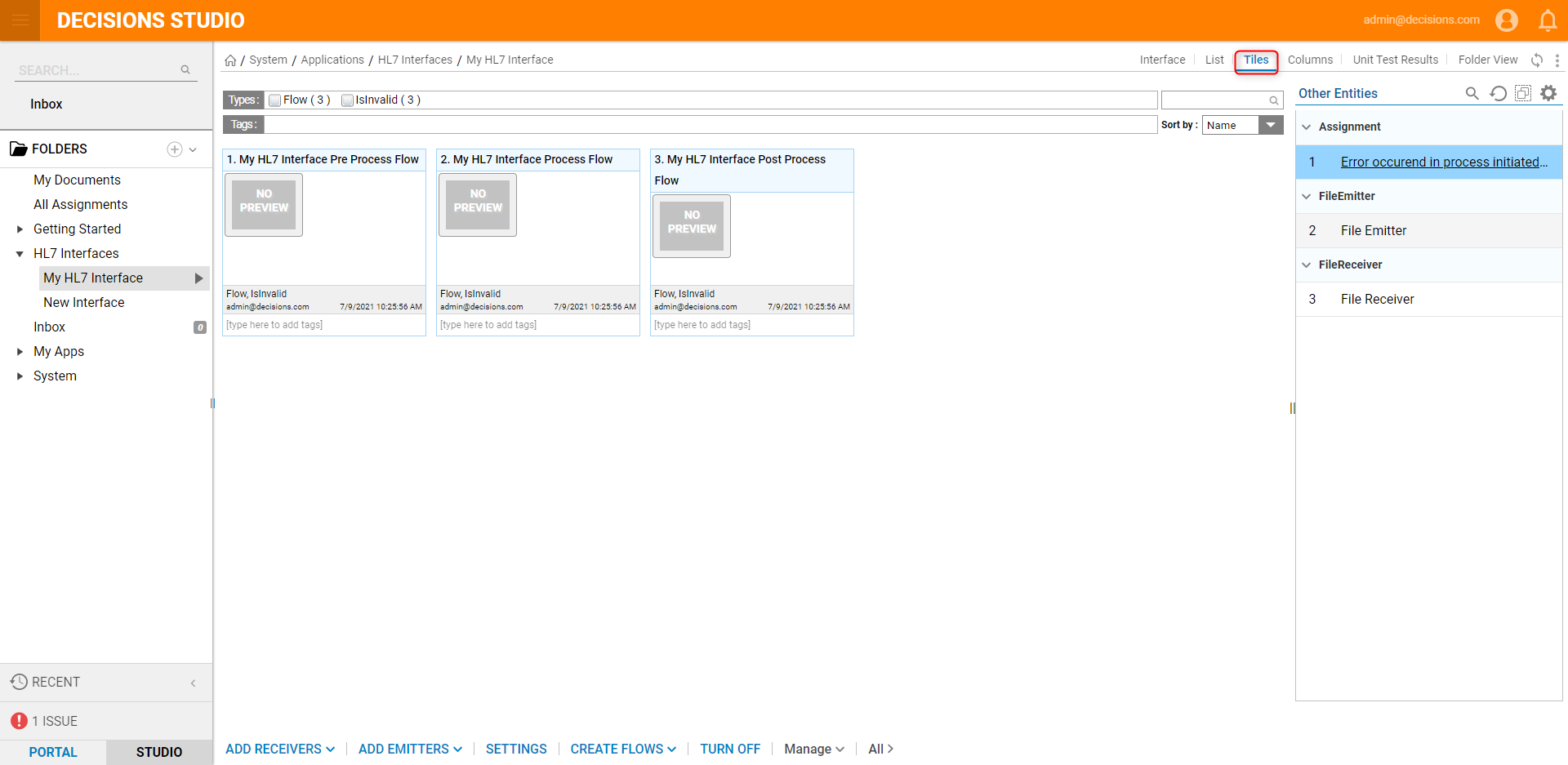Overview
The HL7 module allows users to send, receive, and add business processing logic to HL7 messages through an HL7 interface. Processing can be applied when messages are received at various stages via processing Flows. There are three processing Flows that can handle messages Pre-processing Flow, Process Flow, and Post Processing Flow.
- Installation of the HL7 module. To learn how to install a module, see Installing Modules in Decisions.
- Configuration of the HL7 module. To learn more, see HL7 Module Overview and Setting up Receivers & Emitters.
Receiving Messages
Once a Receiver has been enabled to start receiving messages, the new messages will display under Recent Messages on the left side of the Interface Dashboard. Messages that have an error occurred will display under Open Tasks and the Reciever will appear on the right side under Name.
Right-click one of the messages in the recent list and click View HL7 Message to display the message.
Processing Messages
To define how this Interface processes HL7 content, select Tiles on the top action bar to display the processing Flows.

Pre Processing Flow
The Pre Processing Flow gets the HL7 Message as text before the message is parsed into an actual HL7 object. This Flow allows the user to perform manipulations on the message before the main Processing happens within the Decisions platform.

| Flow Step | Step Description |
|---|---|
| Add Segment At Position | Inserts the specified text (assumed to be a segment) at a position in a String[] of segments. |
| Clean Special Chars Before Segment Start | Removes newline and carriage return characters. |
| For Each Segment Array in Envelope | Takes the main text from the HL7 Message and gives each individual Message as a String[] of segments one at a time. |
| Get Data From Segment By Position | Gets data from a segment by the position of the data in the segment |
| Get Data From Segment By Position In Message | Gets data from a segment by the position of the data in the Message |
| Get First Segment By Type | Returns the first segment from the Array of Segments by Segment Type |
| Get Segment Position | Gets the position or index of a specific segment. |
| Get Segments By Type | Gets all segments by a specific Segment Type |
| Join Messages Into Envelope | Takes a list of String values and converts it into a String with Message Separator characters between each Message |
| Join Segments Into Message | Takes a list of String values and converts it into an HL7 Message with segment separator characters between each segment |
| Remove All Segments By Type | Removes all the segments with the matching String type |
| Replace Data In Segment By Position | Substitutes new data in a segment by the position value |
| Replace Data In Segment By Position In Message | Substitutes new data in a segment by the position value in a Message |
| Split Envelope Into Messages | Splits an Envelope into a String[] with the Message Separator character |
| Split Message Into Segments | Splits a Message into a String[] of segments with the segment separator character |
Processing Flow
The Processing Flow is set up to do no work. This allows users to use the Decisions HL7 Mediator to receive Messages from systems and send them right back out again unmodified. Users are able to create a single hub where Messages are distributed to a wide range of systems in the environment, but the Processing Flow lets users inject behavior.
The Processing Flow allows users to:
- Stop the Message and assign tasks to people (alerts, corrections, notifications)
- Transform the Message using databases, web services, math, text manipulation, and more
- Store the messages in other systems
- Transform the Message data
- Have other users manually correct the Message data
- Compare the Message data to other systems and either accept or discard it
- Merge Messages with other Messages
The Processing Flow also has a special set of HL7 Message specific steps that can be used in the workflow engine. Below are a few steps that require an explanation of how to use them.
| Flow Step | Description |
|---|---|
| For Each Abstract Message In Envelope | Iterates through all of the HL7 Messages in the Envelope and allows users to work with one Message at a time until the work is complete. (Used with the Cast Message as Another Message Type step which lets users treat a Message as another Type) |
| For Each Message In Envelope | Similar to the For Each Abstract Message in Envelope except that the Message Types that are expected to be processed are specified and each Message Type received separate paths to modify Message in the workflow. |
| Sent to Interface | Allows the user to send a Message directly to an Interface at a specific Stage (Pre-Processing, Processing, Post-Processing, Emitter) of the processing. |
Post-Processing Flow
The Post-Processing Flow behaves as the counterpart to the Pre-Processing Flow. It takes the raw HL7 text that the Processing Flow has passed through and allows it to be modified before it is sent over to receiving systems via the Emitters. This allows users to accommodate systems and services that do not support the standards appropriately.